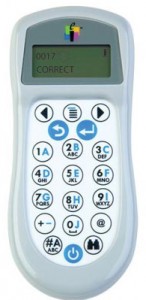Clickers in the classroom
 The Center for the Advancement of Teaching and Learning (CATL) Teaching and Learning Technologies (TLT) recently hosted a series of seminars about the use of classroom response systems, or “clickers.” Guest speakers Tony Crider,
The Center for the Advancement of Teaching and Learning (CATL) Teaching and Learning Technologies (TLT) recently hosted a series of seminars about the use of classroom response systems, or “clickers.” Guest speakers Tony Crider,
Derek Bruff, director of Vanderbilt University Center for Teaching, was one of the guest speakers that TLT and CATL sponsored in February. Derek, the author of , “Teaching with Classroom Response Systems: Creating Active Learning Environments,” is an expert in using clickers in the classroom. For his book’s research, Derek interviewed about 50 faculty members at different universities and discovered numerous ways that clickers can be used. Derek presented a variety of ways that faculty can use clickers:
Quizzes and class participation
Some faculty members that Derek has worked with used clickers to see if their students were following along with the material. Others took it a step further and used clickers for class participation and discussion.
“You can lecture for 15 or 20 minutes and ask a question, but that only confirms that they’re awake,” Derek said. “Ask something that will generate different opinions. Use this to create discussion.”
Another instructor gave clicker quizzes to make sure students were adequately prepared for class and sent students home if they scored under 80%. “The students loved the expectation of preparedness,” Derek said. “She never had to use that penalty more than once.”
Critiquing
One professor found that students were hesitant to give their peers constructive criticism. When he implemented clickers into the classroom, the students could give anonymous critiques. Students rated their peers’ performances with clickers without having to face any sort of embarrassment.
“This opened the door to more productive critiques,” Derek said.
Proving points
In subjects like economics and psychology, clickers can serve as simulations. One psychology instructor showed students ten words related to needles. Later, she surveyed them using clickers and found that many students thought the word “needle” was actually on the list. This served as a starting point for a discussion.
More information about using clickers in the classroom can be found on Derek Bruff’s website, www.derekbruff.org.
If you’re interested in using clickers in your classroom, please contact TLT at 336-278-5006 or tlt@elon.edu. Through Media Services, we have access to several sets of clickers that can be made available for an extended loan period.
 Follow
Follow